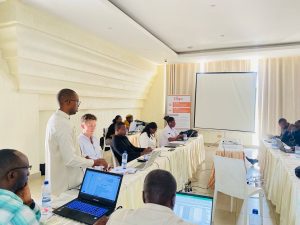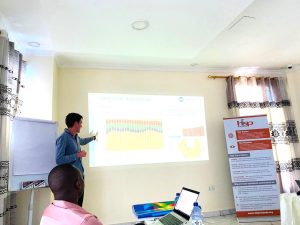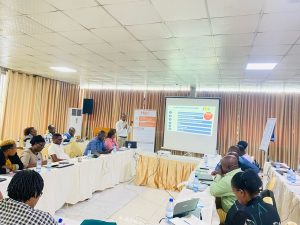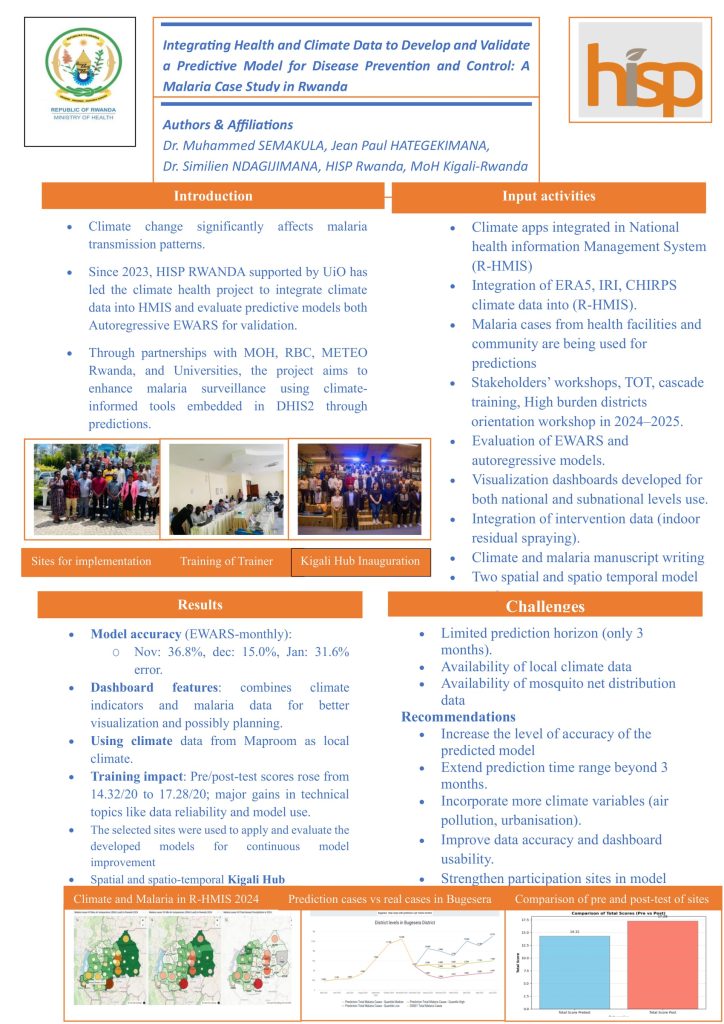As climate change continues to reshape public health patterns globally, HISP Rwanda, in collaboration with the Ministry of Health (MoH), Rwanda Biomedical Centre (RBC), METEO Rwanda, and several academic institutions, has taken the lead in a groundbreaking project aimed at integrating climate and health data to enhance disease prevention—particularly malaria surveillance.
Launched in 2023 and supported by the University of Oslo (UiO) through the Wellcome Trust, the project is part of the larger DHIS2 Climate & Health initiative. It focuses on building predictive models within the DHIS2 platform to forecast malaria outbreaks based on environmental and health indicators.
HISP Rwanda’s Technical Contribution
At the heart of the initiative, HISP Rwanda spearheaded the integration of climate data (such as ERA5, IRI, and CHIRPS) into Rwanda’s National Health Information Management System (R-HMIS). This integration allows for climate-sensitive predictive analytics using EWARS (Early Warning, Alert and Response System) and autoregressive models.
HISP Rwanda also played a leading role in the development of customized DHIS2 dashboards that combine climate indicators with malaria surveillance data. These dashboards are being used at both national and subnational levels to improve data-driven planning and early warning response mechanisms.
Capacity Building and Stakeholder Engagement
In collaboration with MoH and other partners, HISP Rwanda organized Training of Trainers (ToTs), stakeholder workshops, and cascade training sessions across high-burden districts. These activities aimed to build local capacity to interpret and use climate-informed surveillance data effectively.
One key milestone was the inauguration of the Kigali Hub, a central node for spatial and spatio-temporal model development and testing.



Promising Results and Model Validation
Initial results show encouraging signs. Model validation using EWARS for monthly malaria predictions yielded:
-
November error: 36.8%
-
December error: 15.0%
-
January error: 31.6%
In addition, training evaluations revealed substantial improvement, with average participant scores rising from 14.32/20 to 17.28/20, highlighting enhanced technical capacity in data reliability and model application.
Challenges and the Road Ahead
Despite the progress, several challenges remain:
-
Short prediction horizons (only 3 months)
-
Limited access to local climate and mosquito net distribution data
To address these issues, HISP Rwanda recommends:
-
Extending prediction timelines
-
Incorporating more climate variables (e.g., air pollution, urbanisation)
-
Enhancing dashboard usability and data accuracy
-
Expanding participation from field-level stakeholders
The DHIS2 Climate & Health project in Rwanda represents a bold step toward leveraging digital health tools to combat climate-sensitive diseases. Through strong coordination, technical leadership, and on-the-ground implementation, HISP Rwanda has positioned itself as a regional leader in climate-informed health innovation.
As predictive modeling tools continue to evolve, this work sets the stage for more resilient health systems in Rwanda and other low- and middle-income countries facing similar climate challenges.
